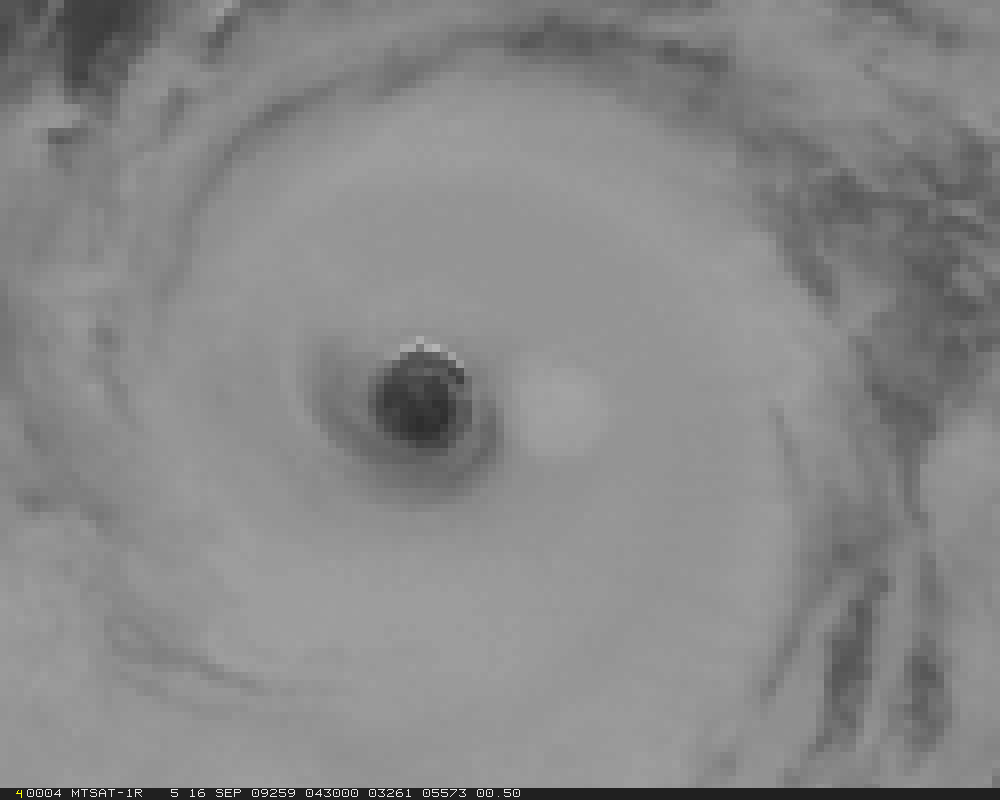MTSAT-1R Band 5 Anomaly
A curious image artifact was noted on MTSAT-1R 3.75 µm shortwave IR imagery, in the form of a very cold “false eye” appearing just to the right of the actual eye of Typhoon Choi-Wan (17W) in the western North Pacific Ocean . The “ghost” of the eye exhibited a satellite radiance of zero (very cold, appearing bright white on the image), and was offset from the true eye by 16 pixels in the horizontal and 1-2 pixels in the vertical. This false eye was most apparent on MTSAT-1R imagery during the local night-time hours, as was seen on 16 September 2009 at 14:30 UTC (above) and 15:30 UTC (below).
This false eye artifact was also evident during local daytime hours, but the “ghost” did not exhibit zero radiance — the feature could be seen better on the shortwave IR imagery once a contrast stretch enhancement was applied (below). The offsets of the false eye were the same as seen during local night-time hours.
A similar (but less obvious) image artifact could be seen on a night-time shortwave IR image over China (below) — there was a bright white “ghost” to the right of the warm area that was between the two colder cloud features (again, the ghost feature was offset to the east by 16 pixels with a vertical displacement of 1-2 pixels).
The exact cause of these image artifacts is not known; however, since the MTSAT-1R satellite scans from left to right using a Charge-Coupled Device (CCD) array, the satellite sensor may be overcompensating for the CCD “quantum wells” losing more charge faster than expected, subtracting more of a bias than it should (this could also be a side-effect of sensor aging). Instrument cross-talk could be another source of this type of image anomaly.
Kudos to Chris Schmidt at CIMSS for processing and analyzing these MTSAT-1R images, and supplying the explanations of possible causes of such an image artifact.


